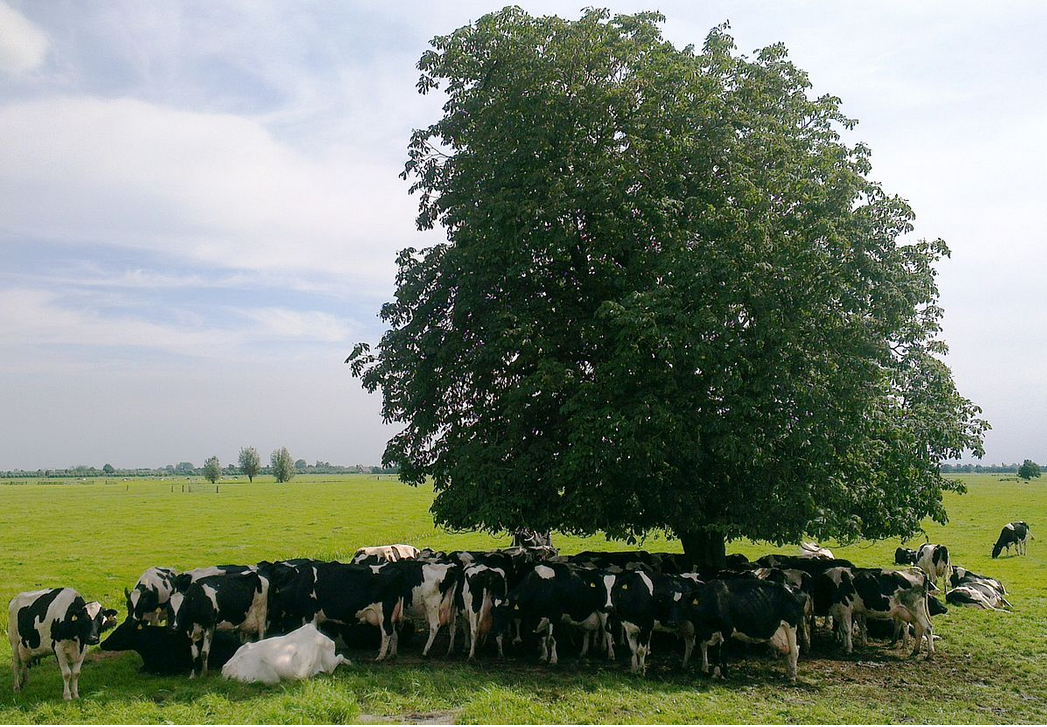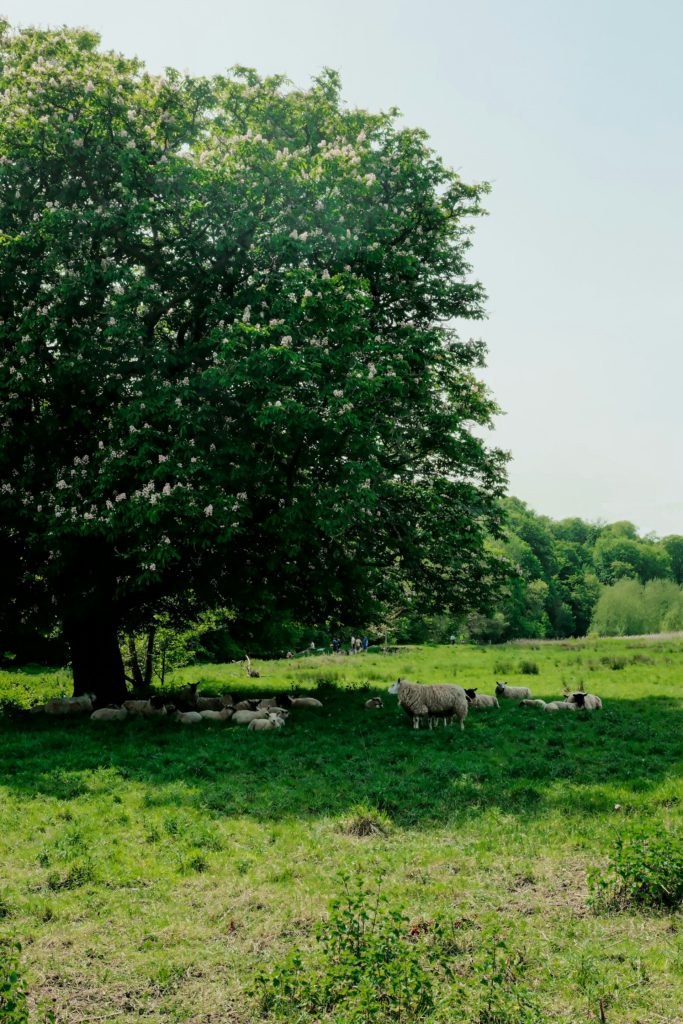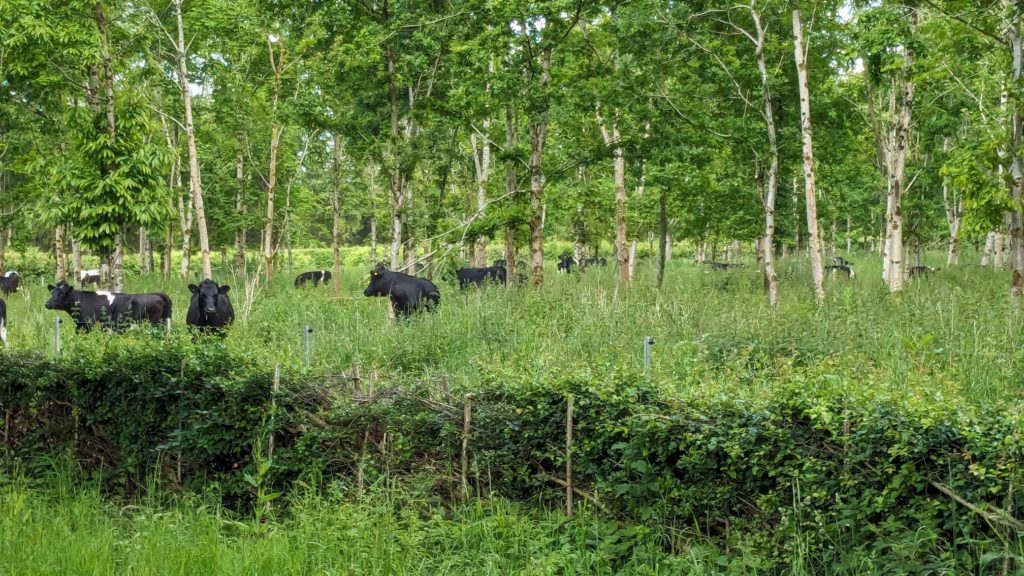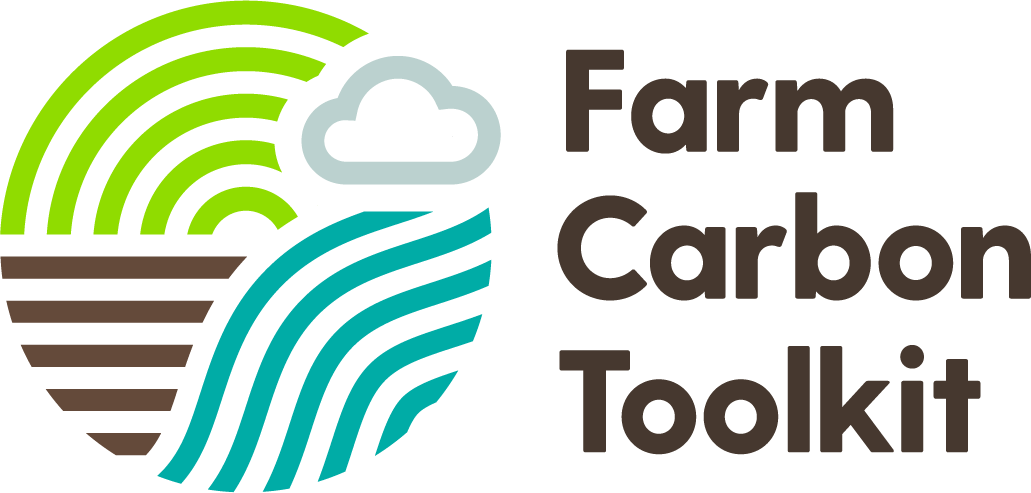
By Jemma Morgan
In my role as a farm carbon and soils project assistant, I get out and about on farms a fair amount. Both at work and at home, this past month has seen me hide in the shade, reach for ice in my drinks and ‘require’ ice-cream…
Everywhere I have been, I have seen animals doing their best to find shade.

They do not have the luxury of opening doors and hiding inside, getting ice for their water, or enjoying the soothing cool of melting ice-cream on the tongue – for many, the best they can find is a hedge.
Don’t get me wrong, I’m a major fan of hedges (plant more, please) but when the sun is high in the sky, at its hottest, when the rest of us are re-applying sunscreen, or, if you’re in sunny Europe, taking a siesta, a hedge alone doesn’t actually provide much shade.
The future could be hot
With the Met Office predicting a 50:50 chance of the UK experiencing 40℃ again within the next 12 years (experienced in Lincolnshire in July 2022), for the sake of farmed animals everywhere we must bring trees back into our farms.
Heat impacts on animals
A quick search on Google Scholar will pull up data showing that heat stressed animals reduce their feed intake, gain less weight, produce less milk, experience reduced fertility and are more susceptible to ill health. Prolonged exposure to temperatures as low as 22℃ can induce these stresses in cattle.
I’m yet to meet a farmer who doesn’t love her/ his stock and wants to take the best care of them. Everyone wants to see good animal welfare. Increasingly, for the sake of the health and welfare of our animals (not to mention the myriad other benefits they can provide including carbon storage, alternative income streams, biodiversity gain, etc.), we need to get more trees into our farm systems.
Some solutions
Allowing a tree to grow tall in an existing hedge, or planting trees in a hedge to ‘gap up’ is a simple start, but adding in-field trees to pastures bring even more benefits. For those farmers practising a form of paddock or mob grazing, it is very easy to end up with a grazing plot that only has one side hedged, offering no shelter at all.
There are a variety of options for introducing trees into pasture fields and an increasing number of agroforestry advisors who can work with you to understand what will work for your farm system and the welfare of your animals. Despite the Sustainable Farming Incentive being paused, you can still produce an Agroforestry Plan for your holding for which you will be paid £1268. This makes me optimistic that tree planting and management will be funded when the financial support options are opened again next year. It’s also worth knowing that you can plant up to 275 trees per 0.25 hectares without changing the classification of your land.

Given that the best time to plant a tree was yesterday, now is a good time to hatch a plan for autumn/ winter planting. You don’t have to wait for the Government to fund this for you. Whilst larger plantings may need some capital assistance, a few trees and some simple protection may be cheaper than you think. Your future bottom line will thank you for it, as will the cows who give you the milk to make that ‘very necessary’ ice-cream…
Links
Farm Net Zero workshop on agroforestry https://farmcarbontoolkit.org.uk/2023/12/14/livestock-and-trees/
Stuart Rogers integrating agroforestry in to a profitable dairy farm https://farmcarbontoolkit.org.uk/2025/07/01/trees-soils-and-wildlife-underpinning-profitable-dairy-farming/
Agroforestry handbook https://www.soilassociation.org/farmers-growers/low-input-farming-advice/agroforestry-on-your-farm/download-the-agroforestry-handbook/
Note: this piece was written in the heatwave of early July 2025

